Achilles
|
According to Greek mythology, Achilles was made invincible as a baby when his mother, holding him by his heels, dipped him upside down in the river Styx. He grew up to be a hero of the Trojan War, until being felled by a lucky arrow from Paris, that struck him in the heel, the only part of him not dipped in the river as a baby.
So we now call the tendon at the back of the heel, our Achilles. |
Achilles Tendon
|
Muscles anchor onto bones through a tendon. The two big calf muscles, gastrocnemius and soleus, share the one tendon, the Achilles tendon, as an anchor onto the back of the heel bone.
Tendons transfer the force of the muscle contracting. The Achilles tendon has to transmit a lot of dynamic forces: walking, running, hopping, jumping, etc. The Achilles tendon is loaded with any activity that sees us up on our toes. Achilles tendon pain is a failure of the tendon to cope with that load. |
Achilles Injury
Achilles tendon pain can begin with:
Examples of excessive loading:
The Achilles tendon’s initial reaction to excess load is an emergency response to make itself stronger/stiffer. It does this by flooding with water, - analogous to how a flat football can be kicked a lot further when it is “pumped up”. The tendon triggers this inflammatory response to make itself more resilient in the short term.
This initial inflammatory or "reactive" period can be called tendonitis (meaning inflammation of the tendon). It generally lasts one-to-three weeks, and is best managed with a period of rest, Ibuprofen, and regular icing.
When excessive loading continues during this reactive stage, the tendon tissues become progressively more damaged, progressing through "disrepair" and "degenerative" phases. This quickly becomes a chronic injury that is much harder to treat, which we call tendinopathy.
- A direct blow on the tendon, or
- Excessive loading
Examples of excessive loading:
- Single high-intensity session
- Repeated up-hill running
- Increased frequency of training
- High-load training more than five times a week
- Novel training drills
- Rapid introduction of plyometric training
- High loads when fatigued
- Sprints at the end of training
- Change in footwear
- Shoes that provide less support, or stiff soles
- Shoes that mandate a forefoot strike or have a lower heel wedge
- Change in surface
- Running in soft-sand
- Running on uneven surfaces
- Training with muscle stiffness
The Achilles tendon’s initial reaction to excess load is an emergency response to make itself stronger/stiffer. It does this by flooding with water, - analogous to how a flat football can be kicked a lot further when it is “pumped up”. The tendon triggers this inflammatory response to make itself more resilient in the short term.
This initial inflammatory or "reactive" period can be called tendonitis (meaning inflammation of the tendon). It generally lasts one-to-three weeks, and is best managed with a period of rest, Ibuprofen, and regular icing.
When excessive loading continues during this reactive stage, the tendon tissues become progressively more damaged, progressing through "disrepair" and "degenerative" phases. This quickly becomes a chronic injury that is much harder to treat, which we call tendinopathy.
Treatment
There are a range of treatment options for Achilles tendinopathy but the most beneficial are:
- Load management
- Mechanotherapy
Load Management
Load management essentially means avoiding the activities that cause pain. Of the total volume of work that the tendon must cope with, I get patients to dial down the load by about a quarter, and stop the most aggravating activities – most likely the more demanding / explosive activities: hopping, skipping, jumping, sprinting, hills, plyometrics.
So usually total rest isn’t required for a chronic Achilles tendon pain. Patients can keep going with their cardio, but possibly trial a lower impact, cross-training option, depending on how the tendon responds.
I judge how the tendon "is", based on a daily measure of a designated activity. This may be the length of time it is sore in the morning, or a quick test like a single leg hop, or an activity that is done at the same time every day, like coming down the front steps. If the pain is better on tomorrow’s test we are going well. If the pain is worse we need to modify what we’re doing.
So usually total rest isn’t required for a chronic Achilles tendon pain. Patients can keep going with their cardio, but possibly trial a lower impact, cross-training option, depending on how the tendon responds.
I judge how the tendon "is", based on a daily measure of a designated activity. This may be the length of time it is sore in the morning, or a quick test like a single leg hop, or an activity that is done at the same time every day, like coming down the front steps. If the pain is better on tomorrow’s test we are going well. If the pain is worse we need to modify what we’re doing.
Mechanotherapy
Just resting the Achilles doesn’t get it better. The pain may improve but any return to previous activity levels will make it sore again. It’s a common story for a footy player to only remember he finished last season with a sore Achilles when he returns to pre-season training and it’s sore again.
The off season doesn’t magically cure Achilles tendon pain. Mechanotherapy is required. Mechanotherapy is essentially strengthening exercises. I like a graded strengthening program to increase the load bearing capacity of the Achilles tendon.
I start with isometric exercise. Isometrics are great for reducing pain in the Achilles tendon. This can progress to slow/heavy exercises, progressing to more ballistic sport specific requirements.
The off season doesn’t magically cure Achilles tendon pain. Mechanotherapy is required. Mechanotherapy is essentially strengthening exercises. I like a graded strengthening program to increase the load bearing capacity of the Achilles tendon.
I start with isometric exercise. Isometrics are great for reducing pain in the Achilles tendon. This can progress to slow/heavy exercises, progressing to more ballistic sport specific requirements.
Other Treatments
Adjunct treatment options may also help to a degree. Ibuprofen can decrease pain through inhibiting tenocyte cell activation and proliferation. Extracorporeal shock wave therapy can decrease pain. Supportive strapping or bracing, orthotics, and footwear changes can decrease the biomechanical load on the Achilles tendon.






